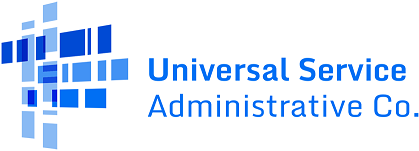Subscriber Management
Service providers must keep NLAD up to date. This webpage outlines how providers may do this, including enrolling eligible consumers, transferring subscribers, and de-enrolling ineligible consumers if applicable.
Jump To
- Enroll Lifeline Eligible Consumers
- Transfer Subscribers
- Upload Subscriber File (Bulk Upload)
- De-enroll Ineligible Subscribers
Enroll Lifeline Eligible Consumers
Service providers must add Lifeline eligible consumers qualified by the NV to NLAD to enroll the consumers in the program. To enroll a consumer in NLAD, service providers need the consumer’s full legal name, last four digits of their social security number or Tribal ID, date of birth, and primary (i.e., home) address. Service providers need to enter this information in NLAD exactly as it was entered in the NV when the consumer submitted their application.
Transfer Subscribers
A benefit transfer is when one service provider transfers a subscriber’s Lifeline program benefit from another service provider. The benefit transfer must be at the request of the subscriber. The subscriber’s new service provider initiates the transaction in NLAD on the subscriber’s behalf.
Prior to initiating a benefit transfer in NLAD, the service provider must obtain the consent of the subscriber. Service providers may use a contract to prove the consumers consent and intent to sign up for service with the new service provider.
Upload Subscriber File (Bulk Upload)
Add or update many subscribers at once by using the National Verifier NLAD Input Template. Download the CSV file, add the necessary data, and upload the file to NLAD. To avoid upload errors, do not modify the template headers.
- National Verifier NLAD Input Template
- APP ID Enroll NLAD Input Template
- Video: Uploading a Subscriber File (1:52 minutes)
- Example: Completed National Verifier NLAD Input Template – This file is completed for four different subscribers under the same SAC.
Data Input Resources
Use these guides to successfully complete and upload the template in NLAD:
- NV Mode Field Names and Descriptions
- File and Row Validation Rules
- Address Standardization Guide
- Enrollment Eligibility Codes
- National Verifier and NLAD Staging Guide: Testing Three New Tribal Errors (error messages released on August 13, 2020)
De-enroll Ineligible Subscribers
If a subscriber becomes ineligible for the Lifeline program, they have an obligation to contact their service provider directly and de-enroll from the Lifeline-supported service.
There are several other situations that might result in subscriber de-enrollment from Lifeline-supported service:
- If a service provider has a reasonable basis to believe a subscriber is no longer eligible, the service provider will send the subscriber a notice of impending termination. The subscriber has 30 days from the date of the impending termination letter to demonstrate continued eligibility (47 C.F.R. Section 54.405(e)(1), 54.410(f)(2)(iii), 54.410(d)(3)). A service provider that provides Lifeline program-supported service must terminate service for any subscriber who fails to demonstrate continued eligibility within the 30-day time period (47 C.F.R. Section 54.405(e)(1)).
- If the Universal Service Administrative Company (USAC), the administrator of the Lifeline program, provides notification to a service provider that a subscriber has more than one discounted account, or that more than one member of a subscriber’s household is receiving service, the service provider must de-enroll the subscriber within five business days (47 C.F.R. Section 54.405(e)(2)).
- Subscribers receiving a free Lifeline-supported service must use their service at least every 30 days. Service providers must notify subscribers who do not use their service at least every 30 days that they will be de-enrolled if they do not use their service during the 15-day notice period (the “cure period”). Service providers must provide eligible subscribers with service during the cure period. Service providers may not request reimbursement for consumers who are in the cure period. If a consumer uses their Lifeline-supported service during the cure period and remains enrolled in the program, service providers can adjust the previous month’s claims to include those subscribers.
